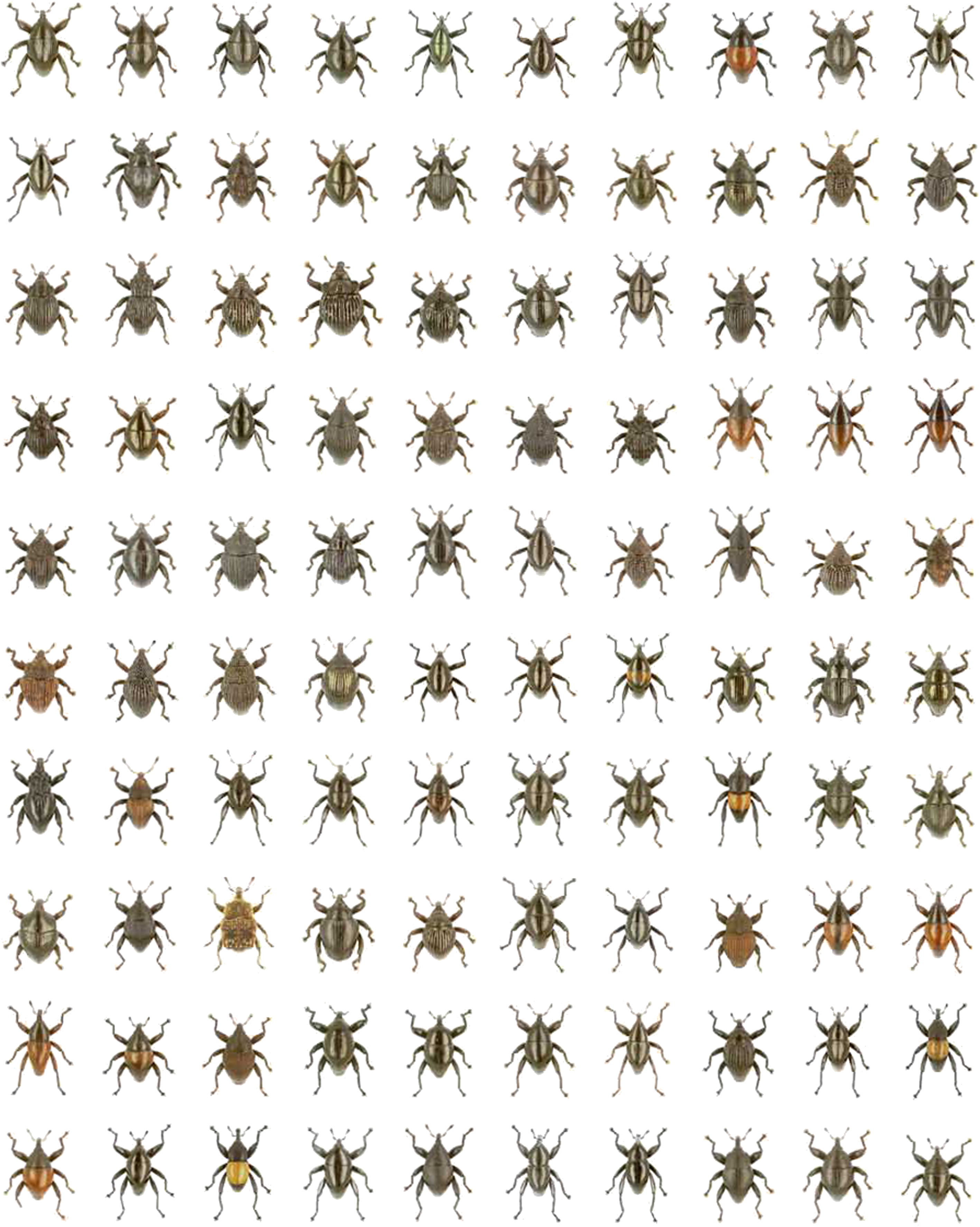|
Entomologisk Tidskrift
The ''Entomologisk Tidskrift'' (English: ''Entomological Journal'') is a peer-reviewed scientific journal published by the ''Entomological Society of Sweden'' (Swedish: Sveriges Entomologiska Förening) covering research on entomology, with an emphasis on Sweden and the other Nordic countries. It was established 1880 and is currently published triannually. The editor-in-chief is Emma Wahlberg ( Swedish Museum of Natural History). The ''Entomologisk Tidskrift'' is abstracted and indexed in The Zoological Record and Entomology Abstracts Entomology () is the scientific study of insects, a branch of zoology. In the past the term "insect" was less specific, and historically the definition of entomology would also include the study of animals in other arthropod groups, such as ara .... External links * Entomological Society of Sweden {{Authority control Entomology journals and magazines Triannual journals Academic journals established in 1880 Multilingual journals Academic jo ... [...More Info...] [...Related Items...] OR: [Wikipedia] [Google] [Baidu] |
Entomology
Entomology () is the scientific study of insects, a branch of zoology. In the past the term "insect" was less specific, and historically the definition of entomology would also include the study of animals in other arthropod groups, such as arachnids, myriapods, and crustaceans. This wider meaning may still be encountered in informal use. Like several of the other fields that are categorized within zoology, entomology is a taxon-based category; any form of scientific study in which there is a focus on insect-related inquiries is, by definition, entomology. Entomology therefore overlaps with a cross-section of topics as diverse as molecular genetics, behavior, neuroscience, biomechanics, biochemistry, systematics, physiology, developmental biology, ecology, morphology, and paleontology. Over 1.3 million insect species have been described, more than two-thirds of all known species. Some insect species date back to around 400 million years ago. They have many kinds of int ... [...More Info...] [...Related Items...] OR: [Wikipedia] [Google] [Baidu] |
Peer Review
Peer review is the evaluation of work by one or more people with similar competencies as the producers of the work ( peers). It functions as a form of self-regulation by qualified members of a profession within the relevant field. Peer review methods are used to maintain quality standards, improve performance, and provide credibility. In academia, scholarly peer review is often used to determine an academic paper's suitability for publication. Peer review can be categorized by the type of activity and by the field or profession in which the activity occurs, e.g., medical peer review. It can also be used as a teaching tool to help students improve writing assignments. Henry Oldenburg (1619–1677) was a German-born British philosopher who is seen as the 'father' of modern scientific peer review. Professional Professional peer review focuses on the performance of professionals, with a view to improving quality, upholding standards, or providing certification. In academia, ... [...More Info...] [...Related Items...] OR: [Wikipedia] [Google] [Baidu] |
Scientific Journal
In academic publishing, a scientific journal is a periodical publication intended to further the progress of science, usually by reporting new research. Content Articles in scientific journals are mostly written by active scientists such as students, researchers, and professors instead of professional journalists. There are thousands of scientific journals in publication, and many more have been published at various points in the past (see list of scientific journals). Most journals are highly specialized, although some of the oldest journals such as '' Nature'' publish articles and scientific papers across a wide range of scientific fields. Scientific journals contain articles that have been peer reviewed, in an attempt to ensure that articles meet the journal's standards of quality and scientific validity. Although scientific journals are superficially similar to professional magazines, they are actually quite different. Issues of a scientific journal are rarely read ... [...More Info...] [...Related Items...] OR: [Wikipedia] [Google] [Baidu] |
Entomology
Entomology () is the scientific study of insects, a branch of zoology. In the past the term "insect" was less specific, and historically the definition of entomology would also include the study of animals in other arthropod groups, such as arachnids, myriapods, and crustaceans. This wider meaning may still be encountered in informal use. Like several of the other fields that are categorized within zoology, entomology is a taxon-based category; any form of scientific study in which there is a focus on insect-related inquiries is, by definition, entomology. Entomology therefore overlaps with a cross-section of topics as diverse as molecular genetics, behavior, neuroscience, biomechanics, biochemistry, systematics, physiology, developmental biology, ecology, morphology, and paleontology. Over 1.3 million insect species have been described, more than two-thirds of all known species. Some insect species date back to around 400 million years ago. They have many kinds of int ... [...More Info...] [...Related Items...] OR: [Wikipedia] [Google] [Baidu] |
Nordic Countries
The Nordic countries (also known as the Nordics or ''Norden''; lit. 'the North') are a geographical and cultural region in Northern Europe and the North Atlantic. It includes the sovereign states of Denmark, Finland, Iceland, Norway and Sweden; the autonomous territories of the Faroe Islands and Greenland; and the autonomous region of Åland. The Nordic countries have much in common in their way of life, History of Scandinavia, history, religion and Nordic model, social structure. They have a long history of political unions and other close relations but do not form a singular entity today. The Scandinavism, Scandinavist movement sought to unite Denmark, Norway and Sweden into one country in the 19th century. With the dissolution of the union between Norway and Sweden (Norwegian independence), the independence of Finland in the early 20th century and the 1944 Icelandic constitutional referendum, this movement expanded into the modern organised Nordic cooperation. Since 196 ... [...More Info...] [...Related Items...] OR: [Wikipedia] [Google] [Baidu] |
Editor-in-chief
An editor-in-chief (EIC), also known as lead editor or chief editor, is a publication's editorial leader who has final responsibility for its operations and policies. The highest-ranking editor of a publication may also be titled editor, managing editor, or executive editor, but where these titles are held while someone else is editor-in-chief, the editor-in-chief outranks the others. Description The editor-in-chief heads all departments of the organization and is held accountable for delegating tasks to staff members and managing them. The term is often used at newspapers, magazines, yearbooks, and television news programs. The editor-in-chief is commonly the link between the publisher or proprietor and the editorial staff. The term is also applied to academic journals, where the editor-in-chief gives the ultimate decision whether a submitted manuscript will be published. This decision is made by the editor-in-chief after seeking input from reviewers selected on the basis o ... [...More Info...] [...Related Items...] OR: [Wikipedia] [Google] [Baidu] |
Swedish Museum Of Natural History
The Swedish Museum of Natural History ( sv, Naturhistoriska riksmuseet, literally, the National Museum of Natural History), in Stockholm, is one of two major museums of natural history in Sweden, the other one being located in Gothenburg. The museum was founded in 1819 by the Royal Swedish Academy of Sciences, but goes back to the collections acquired mostly through donations by the academy since its foundation in 1739. These collections had first been made available to the public in 1786. The museum was separated from the Academy in 1965. One of the keepers of the collections of the academy during its earlier history was Anders Sparrman, a student of Carl Linnaeus and participant in the voyages of Captain James Cook. Another important name in the history of the museum is the zoologist, paleontologist and archaeologist Sven Nilsson, who brought the previously disorganised zoological collections of the museum into order during his time as keeper (1828–1831) before returning ... [...More Info...] [...Related Items...] OR: [Wikipedia] [Google] [Baidu] |
The Zoological Record
''The Zoological Record'' (''ZR'') is an electronic index of zoological literature that also serves as the unofficial register of scientific names in zoology. It was started as a print publication in 1864 by the Zoological Society of London, as ''The Record of Zoological Literature'', and changed its name to the ''Zoological Record'' in 1870. From 1980 to 2004, the ZR was published by BIOSIS, from 2004 to 2016 it was published by Thomson Reuters, and from 2016 to the present it has been published by Clarivate Analytics. The print version ceased in 2016, but the publication continues as an electronic index. History In 1864, Albert Günther and a group of zoologists associated with the British Museum and the Zoological Society came together to begin work on ''The Record of Zoological Literature'', the first volume of which was published in 1865 by John Van Voorst, covering zoological literature that had been published in 1864. This work was intended to be an English lang ... [...More Info...] [...Related Items...] OR: [Wikipedia] [Google] [Baidu] |
Entomology Abstracts
Entomology () is the scientific study of insects, a branch of zoology. In the past the term "insect" was less specific, and historically the definition of entomology would also include the study of animals in other arthropod groups, such as arachnids, myriapods, and crustaceans. This wider meaning may still be encountered in informal use. Like several of the other fields that are categorized within zoology, entomology is a taxon-based category; any form of scientific study in which there is a focus on insect-related inquiries is, by definition, entomology. Entomology therefore overlaps with a cross-section of topics as diverse as molecular genetics, behavior, neuroscience, biomechanics, biochemistry, systematics, physiology, developmental biology, ecology, morphology, and paleontology. Over 1.3 million insect species have been described, more than two-thirds of all known species. Some insect species date back to around 400 million years ago. They have many kinds of inte ... [...More Info...] [...Related Items...] OR: [Wikipedia] [Google] [Baidu] |
Entomology Journals And Magazines
Entomology () is the scientific study of insects, a branch of zoology. In the past the term "insect" was less specific, and historically the definition of entomology would also include the study of animals in other arthropod groups, such as arachnids, myriapods, and crustaceans. This wider meaning may still be encountered in informal use. Like several of the other fields that are categorized within zoology, entomology is a taxon-based category; any form of scientific study in which there is a focus on insect-related inquiries is, by definition, entomology. Entomology therefore overlaps with a cross-section of topics as diverse as molecular genetics, behavior, neuroscience, biomechanics, biochemistry, systematics, physiology, developmental biology, ecology, morphology, and paleontology. Over 1.3 million insect species have been described, more than two-thirds of all known species. Some insect species date back to around 400 million years ago. They have many kinds of interact ... [...More Info...] [...Related Items...] OR: [Wikipedia] [Google] [Baidu] |
Triannual Journals
{{Short pages monitor ... [...More Info...] [...Related Items...] OR: [Wikipedia] [Google] [Baidu] |







